Subtotal: 613,83€ (incl. VAT)
The best places to find extraterrestrial life in our solar system, ranked
If you want to believe, now is the time: the hope that we might one day stumble upon alien life is greater than it ever was. No, it’s not going to be little green men speeding through space in flying disks—more likely microbes or primitive bacteria. But a discovery like that would nevertheless be a sign that we are not alone in the universe—that life elsewhere is a possibility.
Where are we going to find that life? It was once thought the solar system was probably a barren wasteland apart from Earth. Rocky neighbors were too dry and cold like Mars, or too hot and hellish like Venus. The other planets were gas giants, and life on those worlds or their satellite moons was basically inconceivable. Earth seemed to be a miracle of a miracle.
But life isn’t that simple. We now know that life on Earth is able to thrive in even the harshest, most brutal environments, in super cold and super dry conditions, depths of unimaginable pressures, and without the need to use sunlight as a source of energy. At the same time, our cursory understanding of these obscure worlds has expanded tremendously. Our rocky neighbors of Venus and Mars may have once been temperate and Earth-like, and some of the life might have lingered on after these planets’ climates took a turn for the worse. Several of the icy moons that hang around Jupiter and Saturn might have underground oceans that could sustain life. A couple may even have atmospheres. And still other places that seem to be too exotic for life continue to surprise us.
Unlike the myriad of new exoplanets we’re identifying every year, when it comes to worlds in the solar system, we have the ability to send probes to these places and study them directly. “We can measure things that would be impossible to measure with telescopes,” says David Catling, an astrobiologist at the University of Washington. They could study things up close, maybe fly into the atmosphere or land on the surface, and perhaps one day even bring back samples that could reveal whether these planets and moons are home to materials or fossils that are evidence of life—or perhaps life itself.
Here are the 10 best places in the solar system to look for extraterrestrial life, subjectively ranked by yours truly for how likely we are to find life—and how easy it would be to find it if it’s there.
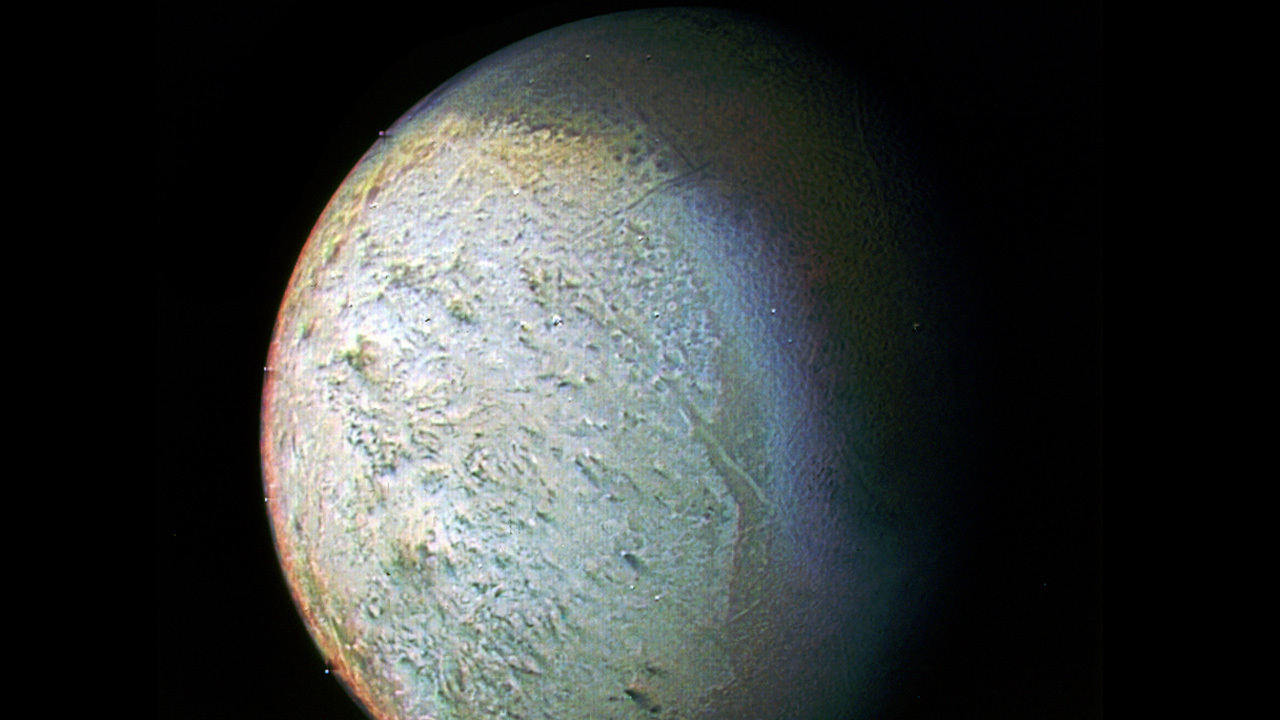
NASA
10. Triton
Triton is the largest moon of Neptune, and one of the most exotic worlds in the solar system. It’s one of only five moons in the solar system known to be geologically active, as evidenced by its active geysers that spew sublimated nitrogen gas. Its surface is mostly frozen nitrogen, and its crust is made of water ice, and it has an icy mantle. Yes, this is a cold, cold world. But in spite of that, it seems to get some heat generated by tidal forces (gravitational friction between Triton and Neptune), and that could help warm up the waters and give rise to life through any organics that might exist on the moon.
But actually finding life on Triton seems like a very distant possibility. The only mission to ever visit the world was Voyager 2 in 1989. The window for such a mission opens up only every 13 years. The best opportunity to visit Triton would be the proposed Trident mission (which seems unlikely to get launched after NASA just greenlighted two new missions to Venus later this decade). And lastly, the horrendous cold tempers hopes that life could stay unfrozen for long enough to make a home for itself.
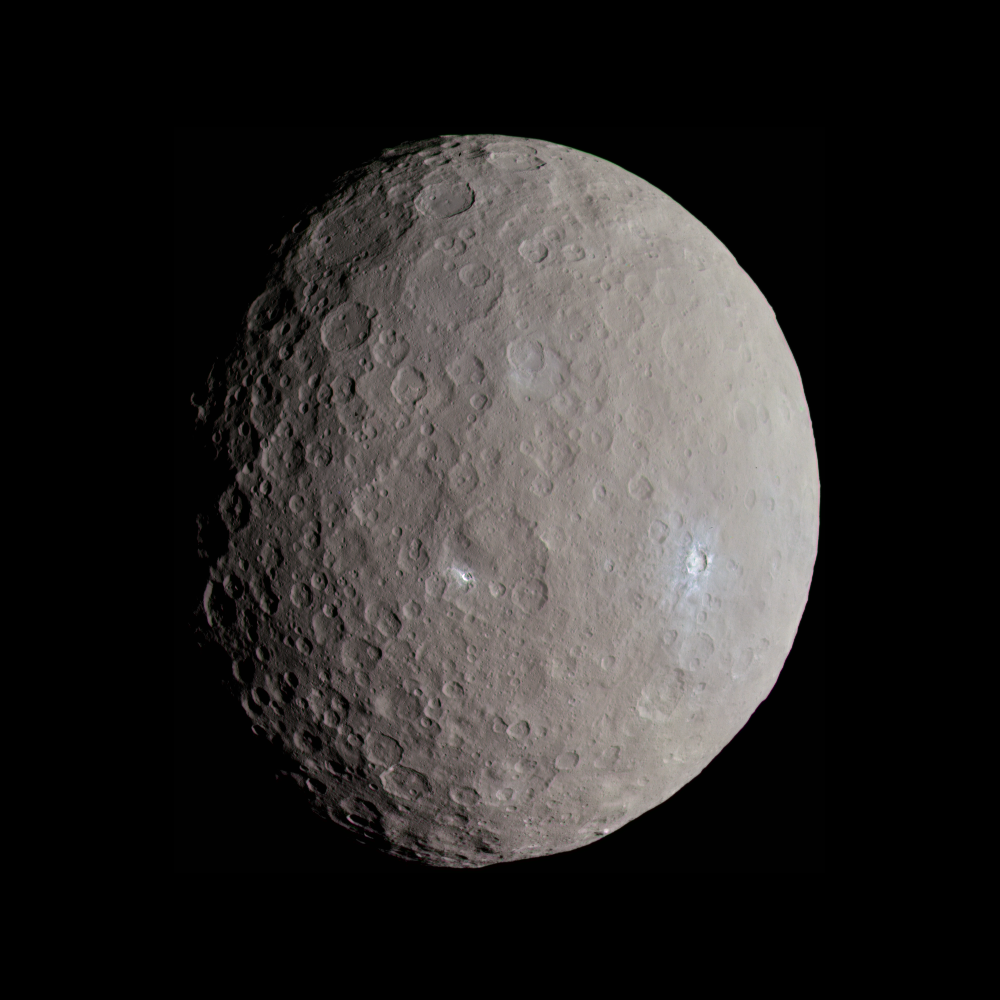
NASA / JPL-CALTECH / UCLA / MPS / DLR / IDA / JUSTIN COWART
9. Ceres
The largest asteroid and smallest dwarf planet in the solar system could be home to liquid water, sitting deep underground. Ceres, a dwarf planet that sits between Mars and Jupiter, was studied by NASA’s Dawn probe from orbit from 2015 to 2018. Scientists are still unpacking and analyzing that data, but tantalizing studies in the past few years suggest there’s an ocean sitting 25 miles below the surface, and could stretch for hundreds of miles. It would almost certainly be extremely salty—which would keep the water from freezing even well below 0°C. Dawn even found evidence of organic compounds on Ceres that could act as raw materials for life.
But Ceres ranks second-to-last on our list because its habitability has too many questions attached. The evidence of subsurface water and the organic materials is still very new. Even if those things are there, it would need some source of heat and energy that could actually help encourage that water and organic material to react in such a way that it leads to life. And even if that occurred, finding that life means we have to drill at least two-dozen miles into the ground to access that water and study it. Lastly, Ceres is tiny—more than 13 times smaller than Earth. It’s not yet clear how that fraction of gravity could affect life on the dwarf planet, but if Earth is our compass for what’s habitable, Ceres’s small size is probably not an asset. There’s no shortage of new proposals for future missions to study the dwarf planet, including ones that would even attempt a sample return mission. But nothing is going up soon.
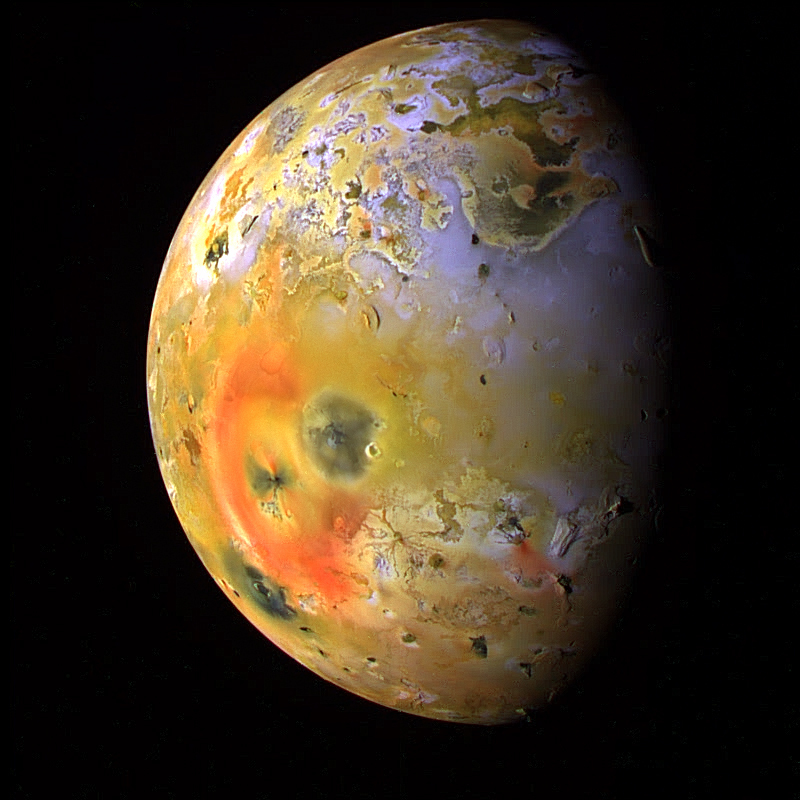
NASA/JPL/UNIVERSITY OF ARIZONA
8. Io
Boasting over 400 active volcanoes, Io is the most geologically active world in the solar system. All of that activity is thought to be caused by tidal heating created as Io’s interior is gravitationally pulled between Jupiter and the other Jovian moons. The volcanism results in a huge coating of sulfur and sulfur dioxide frost (yes, that’s a thing!) across the globe, along with a super thin sulfur dioxide atmosphere. There might even be a subsurface ocean on Io, but it would be made of magma, not water.
Life on Io is very unlikely. But all that heat is a bit of an encouraging sign. There may be locations on the surface or underground that aren’t overwhelmed by the volcanic activity—more temperate places where hardy forms of life have found a way to survive. We wouldn’t be able to study those spots directly, but a probe might be able to find evidence of life if it gets lucky.
That’s easier said than done. The best chance of studying Io is through a proposed NASA mission called Io Volcano Observer (IVO), which if approved would launch in 2029 and do ten flybys of Io. But like Trident, IVO was vying for the same mission spots that were snatched by two upcoming Venus missions.

NASA/JPL/ DLR (GERMAN AEROSPACE CENTER)
7. Calisto
Calisto’s claim to fame is that it has the oldest surface in the solar system. That doesn’t really mean much in terms of habitability though. Where Calisto shines for our purposes is that it’s another moon that’s thought to have a vast subsurface ocean, 155 miles underground. It also retains a thin atmosphere of hydrogen, carbon dioxide, and oxygen, which is more diverse and Earth-like than most of the other solar system moons that could be habitable.
Still, Callisto’s chances of hosting life are not as favorable as other worlds, namely because it’s still pretty damn cold. Our next best chance of really exploring it will be the European Space Agency’s Jupiter Icy Moon Explorer (JUICE), launching next year and set to explore three of Jupiter’s moons. JUICE will make several close flybys of Callisto during its mission.

NASA/JPL
6. Ganymede
The largest moon to orbit Jupiter, and simply the largest moon in the solar system, is covered up in an icy shell. But underneath that surface is home to a global underground saltwater ocean that might contain more water than all of Earth’s own oceans combined. Naturally, all that water has scientists hopeful that some kind of life could exist on the moon. The moon even has a very thin oxygen atmosphere—nothing to write home about, but it’s something neat. And Ganymede has something else no other moon in the solar system has: a magnetic field. A magnetic field is critical for protecting worlds from harmful radiation spewed by the sun.
But Ganymede isn’t perfect. A subsurface ocean is difficult to study, so if there’s life on the planet, we’re going to have a difficult time finding it. And so far, there has not yet been a dedicated mission to study Ganymede, although the JUICE will be the most in-depth investigation of Ganymede when it enters the moon’s orbit in 2032. It may have an opportunity to peer down at the surface and study the interior using radar, and clue scientists into Ganymede’s potential habitability.

ESA – C. CARREAU
5. Venus
Here at the halfway point is where we start to get into the good stuff. Venus has surface temperatures that are hot enough to melt lead, and surface pressures that are more than 80 times as harsh as what we experience on Earth. And yet, maybe Venus is home to life! Those prospects ignited last year when researchers detected phosphine gas in very thick Venusian atmosphere. On Earth, phosphine is primarily produced naturally by life in oxygen-poor ecosystems, which raises the possibility that there might be life on Venus responsible for producing it as well. And the most likely scenario would be microbial life that’s hanging within the clouds—airborne life, basically.
Now, the phosphine detections have come under scrutiny, and the idea of airborne life is certainly not something all scientists can get behind. But this and other work that’s explored Venus’s history of water have renewed a lot of great interest into the idea that Venus may have once been habitable, and might still be. The new DAVINCI+ and VERITAS missions that NASA will launch late this decade won’t find life, but they will get us closer to answering that question more concretely.
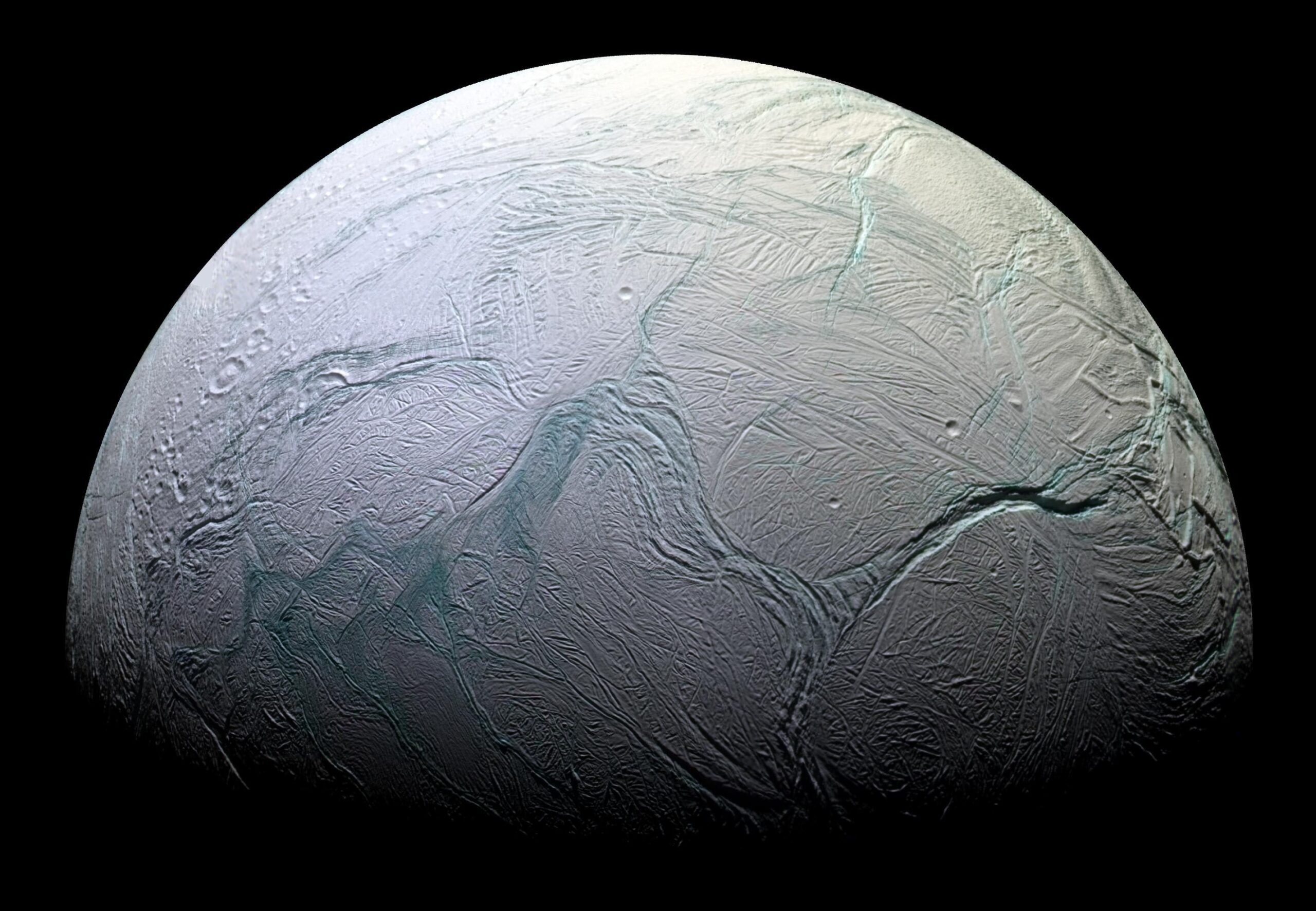
NASA/JPL/SPACE SCIENCE INSTITUTE
4. Enceladus
Saturn’s sixth largest moon is completely covered in clean ice, making it one of the most reflective bodies in the solar system. Its surface is ice cold, but there’s quite a bit of activity going on underneath. The moon ejects plumes that contain a myriad of different compounds, including salt water, ammonia, and organic molecules like methane and propane. Enceladus is thought to have a global salty ocean. And NASA’s found evidence of hydrothermal activity deep underground, which could very well provide a source of heat that’s necessary to give life a chance to evolve and thrive.
In some ways, Enceladus ought to be higher up my list than Titan, were it not for the fact that there just simply isn’t any mission on the books right now to study it. Plenty of proposals have been debated for the last several years, including several under NASA. All are geared toward an astrobiological investigation that would look more closely for signs that Enceladus is habitable to life. While digging underground into the ocean would be the most surefire way to determine whether the moon is home to life, we might also catch a lucky break and be able to detect biosignatures that have been spewed up by the moon’s cryovolcanoes (volcanos that erupt vaporized materials like water or ammonia rather than molten rock). But not for a long time.

NASA/JPL/UNIVERSITY OF ARIZONA/UNIVERSITY OF IDAHO
3. Titan
Titan, Saturn’s largest moon, is another world that sets itself apart from the rest of the solar system. It has one of the most robust atmospheres for a rocky world in the solar system outside of Earth and Venus. It’s teeming with different bodies of liquid: lakes, rivers, and seas. But they’re not made of water—they’re made of methane and other hydrocarbons. Titan is extremely rich in organic materials, so it’s already rich in the raw materials needed for life. And it may also have a subsurface ocean of water as well, though this will need to be verified.
Scientists have just the mission lined up: the NASA Dragonfly mission, which will send a drone helicopter to explore Titan’s atmosphere directly and give us a much needed sense of exactly how developed its prebiotic chemistry runs. That mission launches in 2027 and will arrive at Titan in 2034.
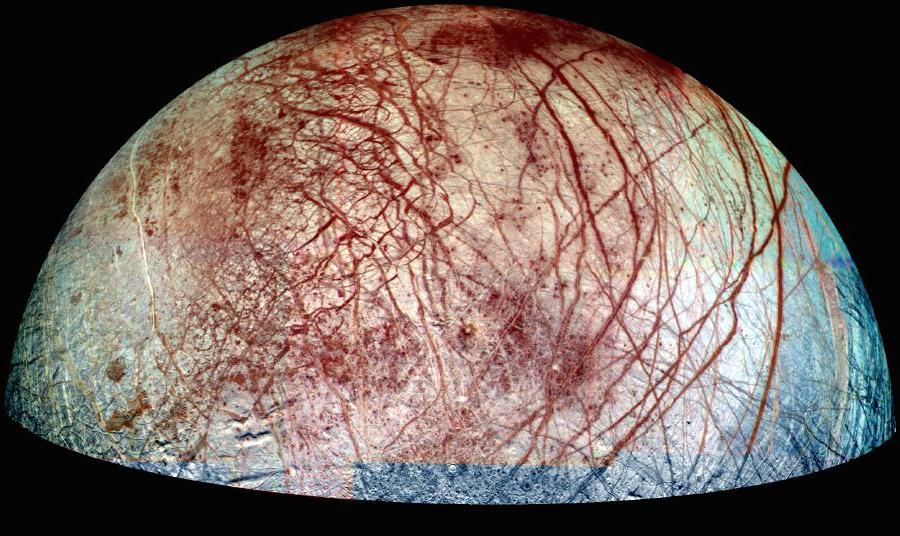
NASA/JPL/UNIVERSITY OF ARIZONA
2. Europa
Jupiter’s moon has an icy shell that’s 10 to 15 miles thick covering up a huge subsurface ocean that’s heated up by tidal forces. That heating is thought to help create an internal circulation system that keeps waters moving and replenishes the icy surface on a regular basis. This means the ocean floor is interacting with the surface—which means if we want to determine whether life exists in those subsurface oceans, we may not necessarily need to go all the way down there. Scientists have found deposits of clay-like minerals associated with organic materials on Europa. And it’s suspected that radiation hitting the icy surface could result in oxygen that might find its way into the subsurface oceans and be used by emerging life. All the ingredients for life are potentially here.
Luckily, we’re set to study Europa in great detail. JUICE will make two flybys of Europa during its time in the Jovian system. But the marquee mission on the books is Europa Clipper, a spacecraft that would conduct low-altitude flights that would attempt to study and characterize the surface, and investigate the subsurface environment as best it can. Clipper launches in 2024, and will reach Europa in 2030.
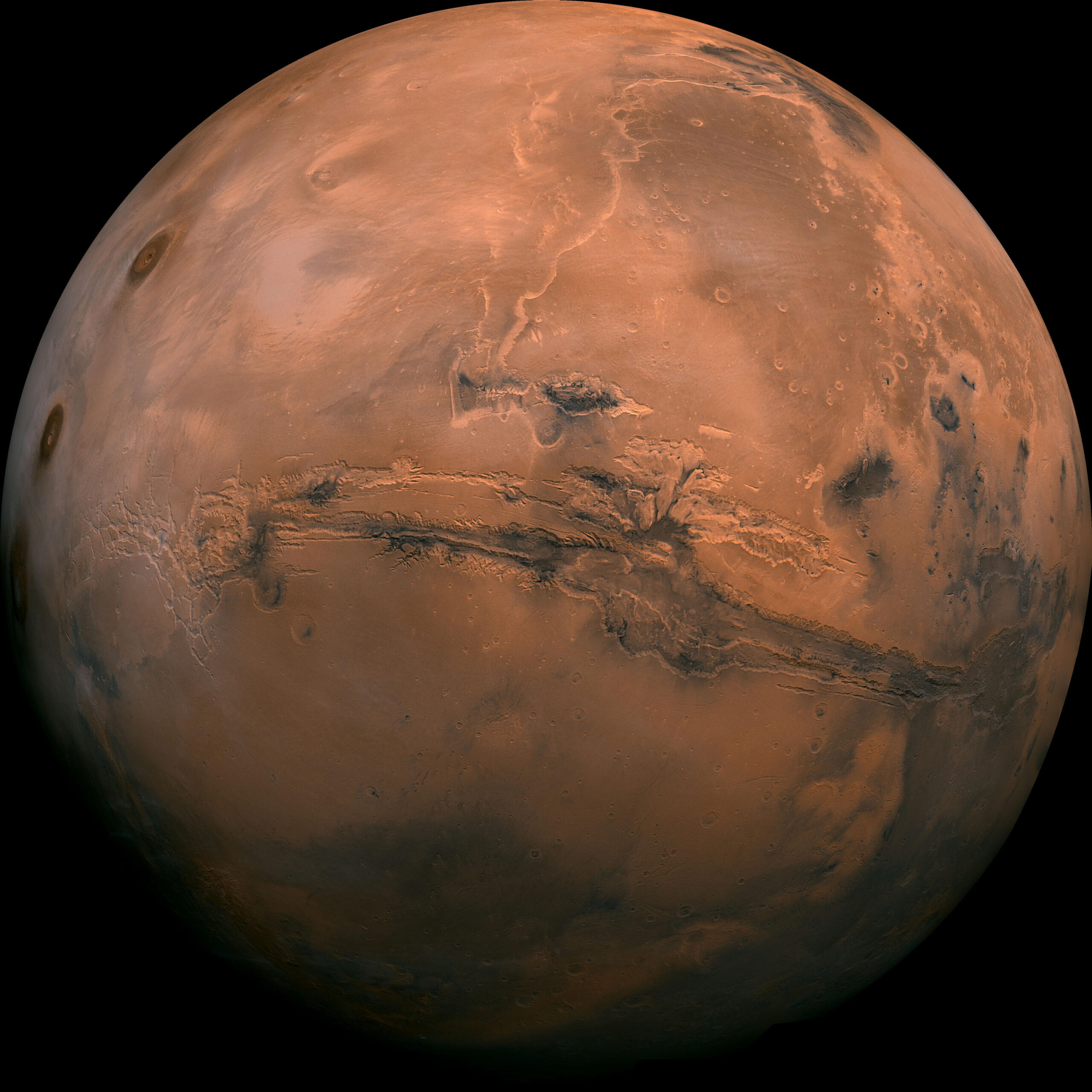
NASA/JPL-CALTECH
1. Mars
Mars takes the top spot for several reasons. We know it was once habitable billions of years ago, when it had lakes and rivers of liquid water on its surface. We know it had a robust atmosphere back then to keep things warm and comfy. And we currently have a rover on the surface, Perseverance, whose express goal is to look for signs of ancient life. It will even secure samples that we’ll one day bring back to Earth to study in the lab.
So what does that have to do with finding current life? Well, if there are signs of ancient life, it’s possible life on Mars still exists. Probably not on the surface, but maybe underground. There have already been a few big studies that have used radar observations to show that reservoirs of liquid water probably exist a couple kilometers below the surface. We’ve found bacteria on Earth surviving in similar conditions, so it’s entirely possible something is living in those parts of Mars as well. Getting down there will be insanely difficult, but if we have reason to believe something is lurking in these reservoirs, it’ll be all hands on deck to figure out how we can get there and see for ourselves.


